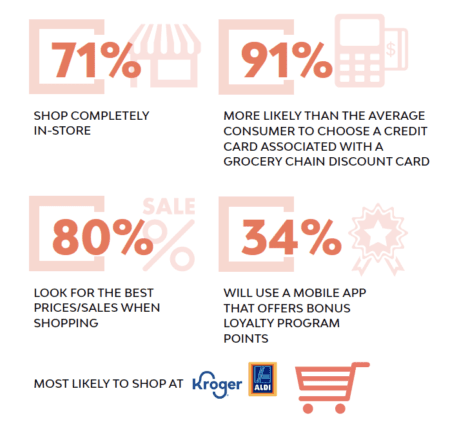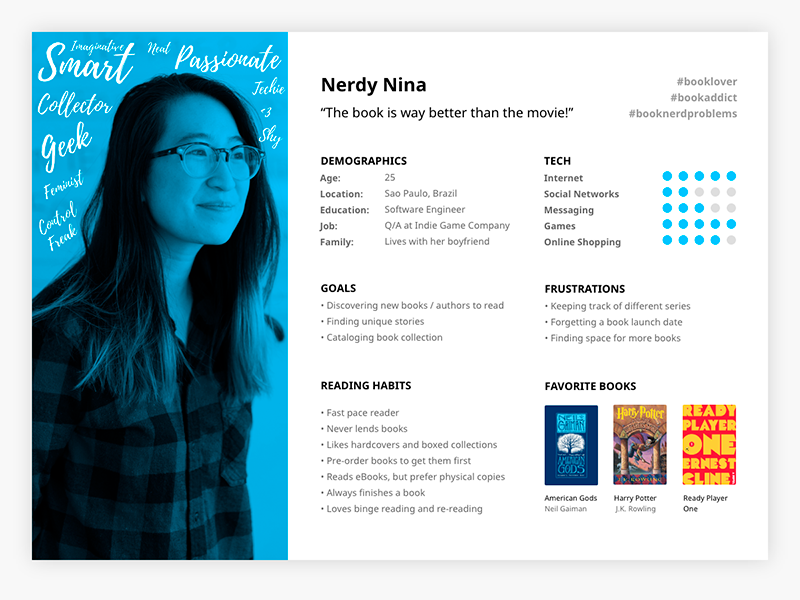Out of all the customer records you have, which ones are the ones that you want to selectively target for some sort of marketing campaign? You could choose all your customers for your campaign, but having a target audience of “everyone” puts you in danger of appealing to “no one”.
Even a strictly defined narrow audience may contain wildly different types of people such as the differences between say your “silver foxes” and your “hipsters”.
Despite having the best information in your systems, it might be difficult to reach your entire potential target audience without resorting to generic and largely ineffective attribute filters. One way you can resolve this is with the concept of audience personas.
Audience personas are essentially fictional audience profiles that represent types of people in a target audience that you can club together to form groups. These groupings can assist in personalizing the message that you want to level at your audience.
Creating buyer personas for email marketing can help you more effectively align your marketing tactics with your customer acquisition strategy.
Leveraging personas means your marketing materials are aligned for specific audiences and helps with pushing and promoting your message more effectively in peoples’ inboxes.
Making your marketing email more personal and tailored to recipients is a recognised way to more effectively improve email campaign performance.

Audience definition and research
You’ll need to define your personas, you’ll want to give them a catchy and encapsulating identifier like one of those illustrated by FutureCMO.
Then when you manage to get in contact with a select few that you think fit the persona, you will want to conduct in-depth interviews and run surveys that will inform you about their interests, occupation, age, work, and personal life alike.
Sorting and categorization
Your interviews and surveys may reveal attributes about your audience that you hadn’t considered. These can then assist in the sorting and categorization of the audience and verification that your initial assumptions about your personas are in fact correct.
You’ll be looking for the dominant yet common traits in the audience to be used as grouping criteria.
It may also be useful to now assign a particular first name to a persona, one that particularly stands out as a representative, even adding a profile image can be useful.
As an example, we’ll call this individual “Loyal Leslie” – and we’ll borrow from Resonate. In a nutshell, she is described thus:
Loyal Leslie is a Gen X shopper who is not only the primary grocery shopper in her house, she prefers to shop with retailers who offer a loyalty points programs. She values safety for her family, the nation, and duty in her community.
Resonate Brand Loyalty Brief 2021

Creating maps
Your last step is creating “maps”. There are two types to consider here. The first is a Journey Map, the second is an Empathy Map.
The Journey Map is a visual representation of the process that a person goes through in order to accomplish a goal in relation to evaluating, selecting, buying, and then adopting or implementing your goods or services. Persona-based customer journey mapping help in understanding the customer further for the purposes of more detailed segmentation.
Empathy maps help you better understand the challenges your persona might face when interacting with your products or services. This, in turn, helps inform things like product management or service delivery, support, and engineering in the creation of better products, services, and solutions.
Marketing personas are helpful for audience definition; they help you in getting closer to customers and remain engaged and relevant because you know them on a deeper level. Accordingly, the knowledge you have will help you to refine the message and brand communication in such a way that it resonates more.
It is all about the data
Building those initial groups and categories requires the presence of data. You may already have some of it, you may need to collect more of it. If you’re still maintaining that kind of data in places like Access Databases and Spreadsheets then it might be time to upgrade to something more scalable, flexible, and secure like a SaaS MDM. We think we have ejust the solution for you in the Pretectum Customer Master Data Management platform.
At Pretectum, we think that the best data curation platform for the creation of marketing personas is a comprehensive MDM data repository, one that is flexible and adaptable and suited to all areas of the business. We’re singularly focused on the customer so we think that you will find something unique and distinctive in our offering when you compare it to generic MDMs that are often feature-rich but at the expense of you just having what you need to get the job done. Reach out to Pretectum to learn more.
- Creating Buyer Personas for Email Marketing Campaigns by Amy Birch
- Segmentation 3.0 – disrupting marketing, media and management by Toni Keskinen
- How to utilize personas for more effective email marketing. by L Ross
- Using Buyer Personas in Email Marketing Campaigns. via GimmeMojo.
- Using personas in email marketing via OregonStateU


